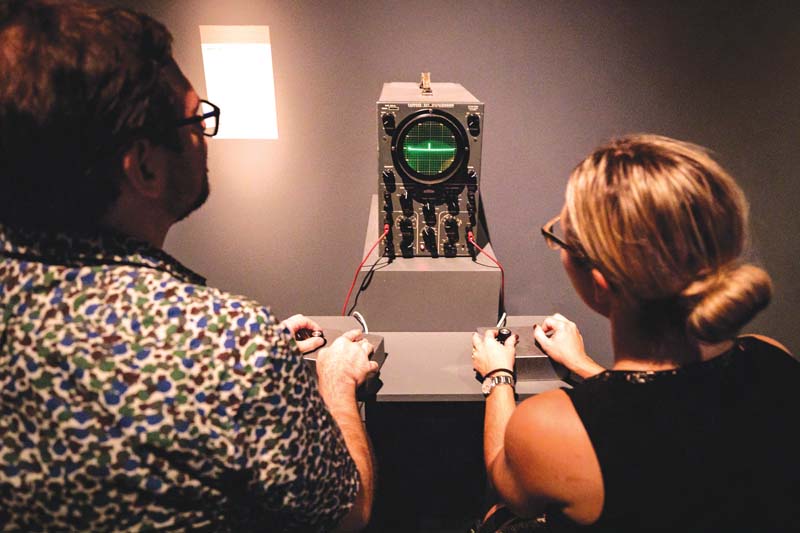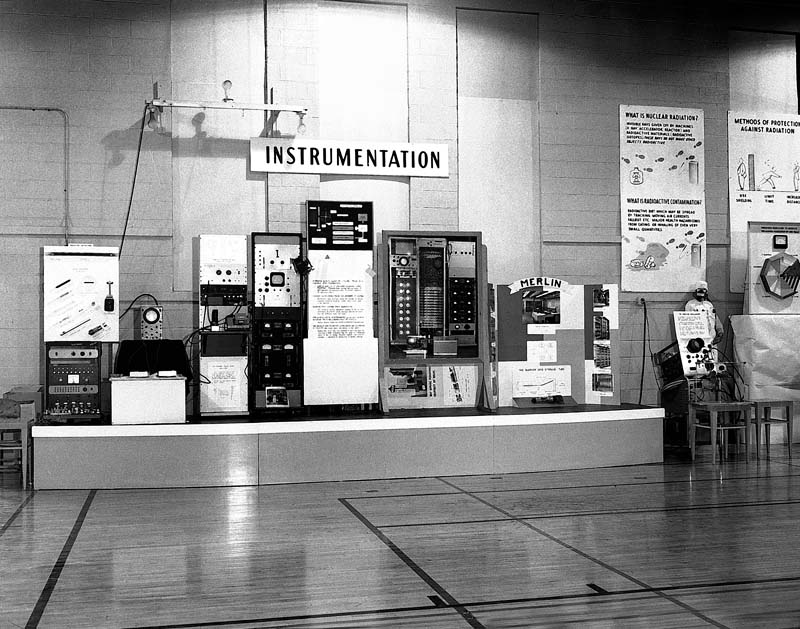
For decades, sports and video games have been the perfect pairing for those who love the idea of competing in the comfort of your home in front of a computer screen or TV. At the Museum of the Moving Image in Astoria, the history of the relationship is put on display in the new exhibit “A Whole Different Ball Game.”
“Jason [Eppink] and I noticed that the 60th anniversary of the game Tennis For Two, a really old analog computer game that is the center of our exhibition, was coming up,” said John Sharp, one of the curators of the show along with Eppink. “We wanted to do the exhibit solely on Tennis For Two but Jason, rightly, was like ‘You know, I’m not sure if anyone wants to come in and play forty different video game versions of tennis.’ So we took a step back and opened it up.”
The display, which is sponsored by game developer Psyonix Inc., provides patrons the chance to play more than 40 different sports video games that span over six decades. In addition to Tennis For Two, the world’s first video game, games on display includes those popular in the 1970s and ’80s, such as Magnavox Odyssey and Atari Football, to newer games that have been embraced in the e-sports circuit, such as Fortnite and Psyonix’s own Rocket League.

“It really runs the gamut,” said Sharp. “There’s everything from a foosball table in the middle of the exhibit to the home version of Pong. We have a range of games from classic to contemporary, and all of them are ranged into thematic groupings”
One of the many sections of the exhibit includes a dedication to sports games that use motion controls, which has become most popular in recent years. Nintendo consoles, such as the Wii and the Switch, as well as the Playstation’s EyeToy and Xbox’s Kinect, have all embraced the idea of having players mimic real life while playing the game.
“One of the main games in this section is Wii Sports,” said Sharp. “Nintendo has always had a great way of introducing how a console works through its games, and sports just naturally worked. The driving factor beyond these [motion control] movements is to get people more engaged. Usually, we’re just sitting, and there was an interest in what could make players more involved. Sports were a natural place to look.”

The most challenging part of the exhibit for Sharp, a professor at Parson’s School of Design, was gathering all the games that he could get his hands on. In addition to hunting down the games themselves, the curators tried to find the authentic specs that the games were played on as well, from the displays to the adapters. It took a lot of phone calls and searches on eBay for them to form the exhibit that they have.
“We first thought of the idea to do the show about two years ago, and it was around this time last year that we started going about trying to collect everything,” said Sharp. “Jason and I were working off of a list of about 100 games, and we were working on it until the last minute.”
The show also examines the impact of sports on the growth of the gaming industry as a whole. It explores the use of sports statistics in games, how broadcasts of sports and video game are similar, and how e-sport competitions are on the rise.
“The main ways we interact with sports in general is through television and the news media,” said Sharp. “Sports video games are really just an extension of that, and it’s another way we can interact with sports as a whole. We took that as our jumping off point in asking what happens when you bring the two together.”
The exhibit is on display at the museum from now until March 10, 2019. For more information, visit www.movingimage.us or call 718-777-6888.


















